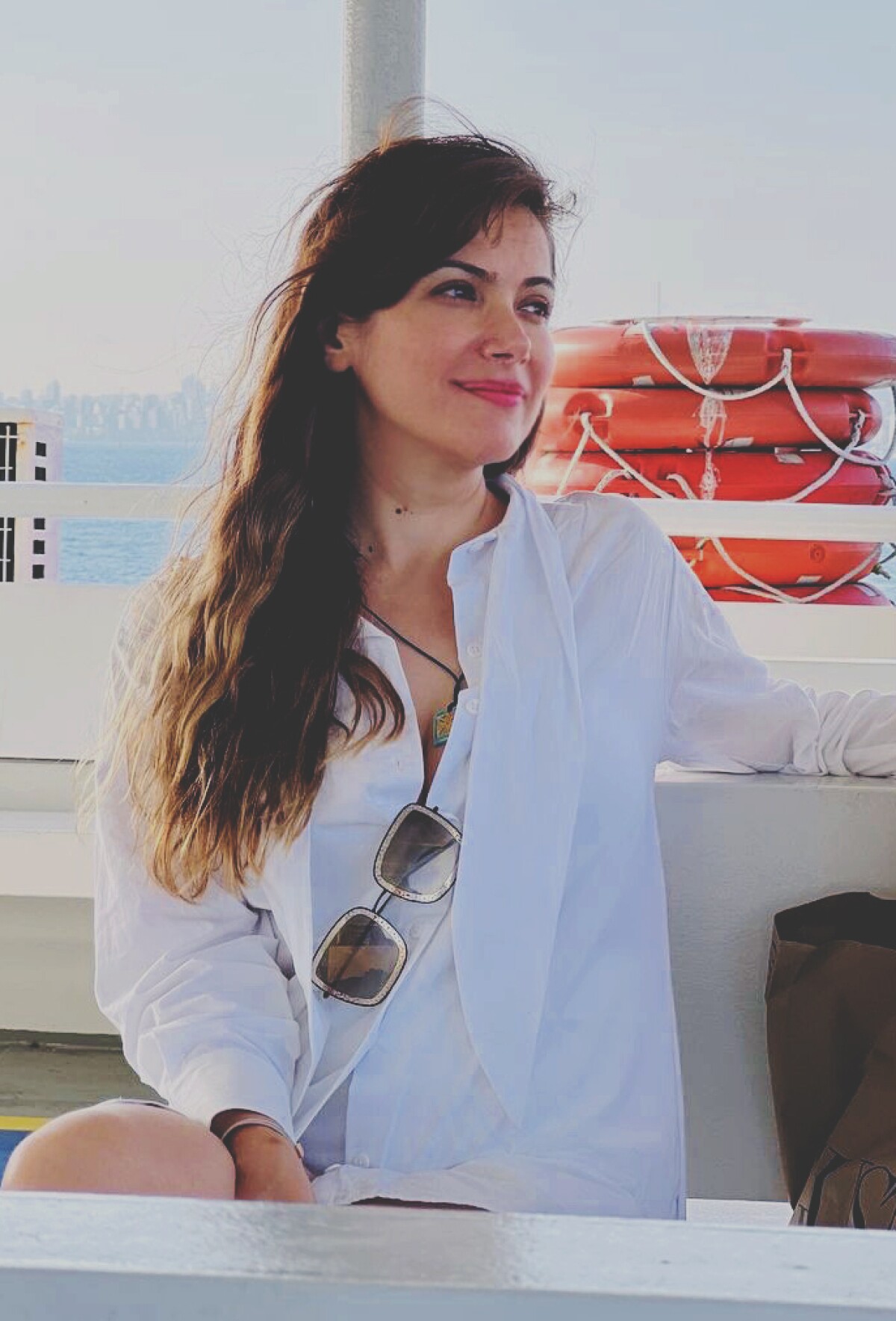On a recent ride-along with an Amazon delivery driver in New York City, Mahdieh Allahviranloo got a firsthand look at the gap between algorithm logic and city logic. The driver’s intelligence was overriding the forecasting machine’s intelligence.
Why? Because the driver knew the challenges of street parking in Brooklyn, among other nuances of city deliveries, and she was aggregating packages to deliver on foot from fewer vehicle stops.
"The driver was so fast and very skilled. She was doing a lot of smart optimization on her own," Allahviranloo recalls.
As a Visiting Academic with the Amazon Last Mile Science team, Allahviranloo explores this space between computational science and human intuition. She is spending her sabbatical from the City College of New York (CCNY-CUNY), where she is an associate professor of civil engineering, researching ways to boost efficiency in Amazon's last-mile delivery network.
Maximum utility, minimum cost
She took the observational ride in Brooklyn to contribute to the work of her colleagues in Seattle-based Amazon last mile transportation team. Most of Allahviranloo's time at Amazon, which began in September 2021, has focused on optimizing last-mile operations. This includes the operation from delivery stations, which are the last stop for packages before they’re loaded up for the trip to customers.
In her research, Allahviranloo integrates data mining, statistical analysis, and optimization models to study how individuals move in urban areas. Among many other publications, she has published papers on the daily activity patterns of travelers, peer-to-peer crowdshipping, vehicle routing and resource allocation problems, smart cities, and self-driving vehicles.
At Amazon, she is applying her expertise to the challenges of managing shipping volume and labor across delivery stations. Though the context is a departure from her focus on urban transportation, there are many similarities, since both are heavily using concepts of network modeling and machine learning.
"They're all mathematical problems," Allahviranloo says. "We are solving network models to gain the maximum utility at the minimum cost."
In one project, she is applying a method called consensus planning to Amazon's network of delivery stations. The model attempts to create consensus among different "agents," or entities within a network, to pinpoint and prevent potential bottlenecks. In the context of delivery stations, the agents might be delivery service providers, delivery station labor planning teams, and the physical capacity of the station in terms of conveyor belts, space, and so on. Any misalignment in planning among these different operational groups would have significant impacts.
Allahviranloo's model examines how to plan for shipping volume in two hierarchies: one, by planning for labor and capacity within each delivery station, and two, by designing a communication system across hundreds of delivery stations so that stations can absorb overflow from one another when needed.
The project is an extension of similar work across fulfillment centers done by Amazon's Supply Chain Optimization Technologies team. The overarching goal for the work is to deliver packages as efficiently as possible to customers at the least cost.
Other projects which she is directly involved fall under the umbrella of picklist optimization modeling, aiming to incorporate an idea of package size, weight, and location to design better pick lists, which tell delivery station item staff which items need to be retrieved from racks for staging and loading.
"We are looking at how we can assign tasks optimally so that everyone finishes around the same time and there is a balanced allocation of tasks among associates," Allahviranloo says.
Having a voice and using it to support others
Allahviranloo has long been interested in the variables that go into mobility of all kinds. She became interested in the field through two undergraduate classes at Sharif University of Technology in Tehran: transportation systems and engineering economics.

“I realized I liked applying decision-making processes and mathematical modeling in innovative ways to solve different engineering problems,” she says.
After getting her civil engineering degree in Iran, she got her PhD in transportation engineering at the University of California, Irvine. Transportation fascinated Allahviranloo because it combined problems of econometrics and optimization with a wild card: people.
"Human behavior is totally uncertain, which makes transportation problems very complex to design and to think about," she says.
After learning about Amazon's Visiting Academic program, Allahviranloo began working with Amazon part-time last year and is now full time through August 2023.
“The Visiting Academic program is a win-win for researchers and Amazon, as it allows Amazon to tap into top scientific talent and enables those researchers to work on large and complex real-world problems,” said Julian Pachon, worldwide director of Last Mile Science and Analytics.
Allahviranloo says she enjoys working with a team where she learns from others, but people are open to new approaches.
"New ideas are not dismissed. We talk, we negotiate, and this provides a very safe environment where ideas are exchanged, and I’m able to have my voice," she said. "I’m not scared of being challenged, but at the same time, I receive constructive critiques from my colleagues, which is amazing."
Allahviranloo also volunteers as a mentor with the CCNY Women's Robotics Club, advising students from disciplines such as mechanical engineering, electrical engineering, and computer science as they pursue robotics projects.
"The main purpose is to give young women the courage to get into programming and have hands-on experience," she says. "I believe that society is successful when everybody's on the same level. If you sit on a chair and one of the legs is short, you're going to fall down."
For aspiring engineers, Allahviranloo recommends being guided by your passion and the process rather than having a goal, since goals can change.
"The main thing is to know what drives you and what makes you happy," she says. "Once you're happy, work is not going to look like work. It's going to be a very joyful process that you have a passion for."
It's the kind of joy Allahviranloo is finding while solving problems on the streets of New York City and on the floors of Amazon’s delivery stations.








